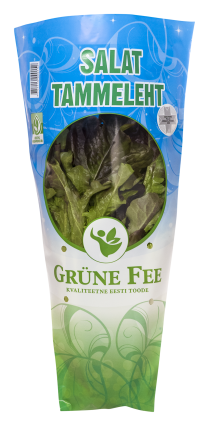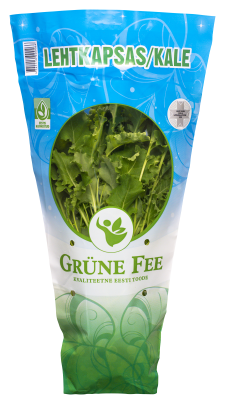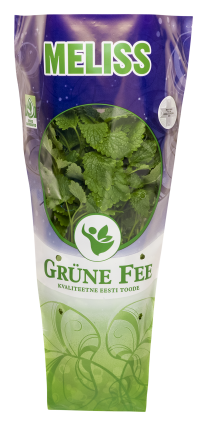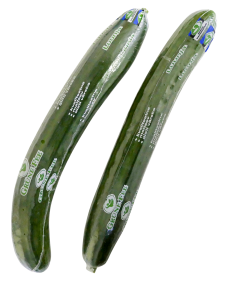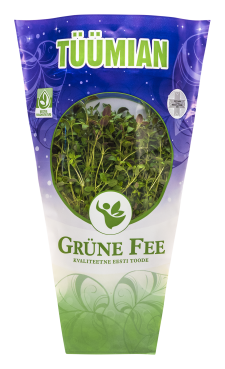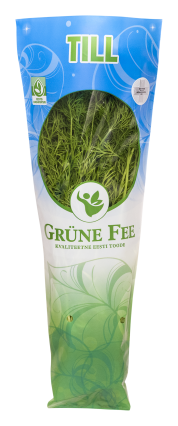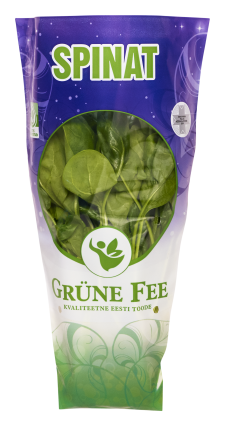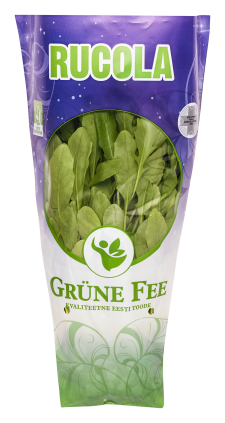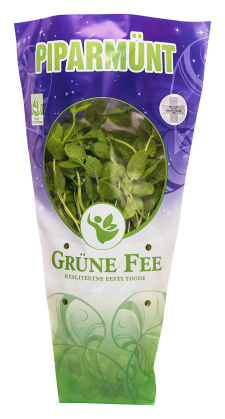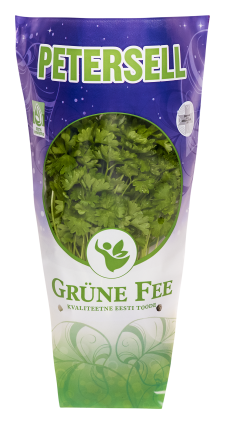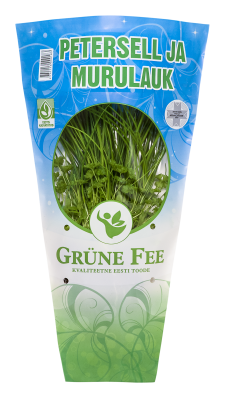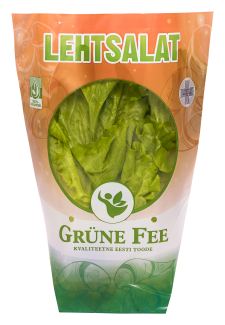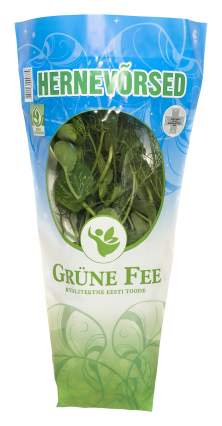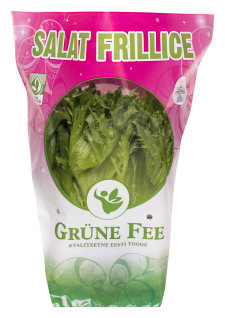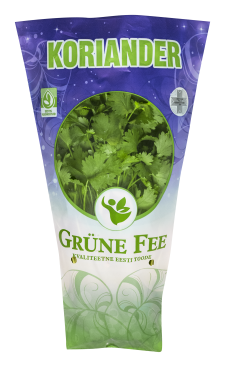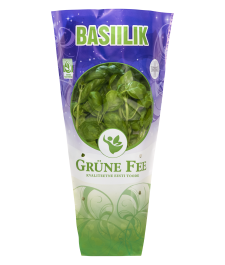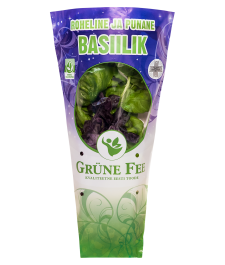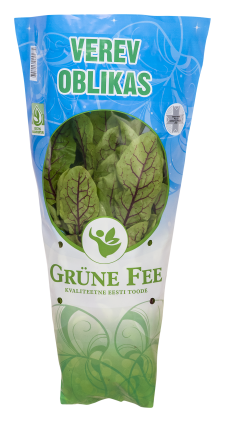Products
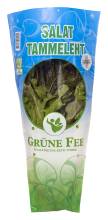
Oak leaf lettuce
Oak leaf lettuce
XThis lettuce has a dark red shade and oak leaf-shaped leaves, which make it highly decorative and great for adding a touch of colour to salads. Can also be used for garnishing sandwiches. It is rich in vitamins and minerals, and has a strong and slightly bitter taste. The leaves are tastiest when used young.
Storage tips
Oak leaf lettuce is best stored in a regular refrigerator, as its ideal storage temperature is between +4 and +8 °C. For longer storage, keep the plant moist.
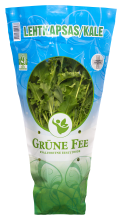
Kale or leaf cabbage
Kale or leaf cabbage
XKale or leaf cabbage is a green- or purple-leaved vegetable whose leaves do not form a head. Unlike broccoli and cauliflower, the edible parts of kale are its leaves, not florets. Kale is considered to be closer to wild cabbage than other domesticated forms of cabbage.
It is one of the most nutrient-rich edible greens, and contains many chemical compounds with potent medicinal properties. At the same time, kale is very low in calories, which makes it suitable for use in various types of diet.
Kale is highly resistant to cold – in fact, exposure to cold actually makes it sweeter and more flavourful. The delicate leaves of the kale plant have an intense flavour that makes it suitable for use in a variety of salads. The strong flavour can be softened by adding a dash of oil or lemon juice. When cooked or dried, kale becomes crunchy, like crisps. Kale chips are primarily made from curly-leaved kale varieties and can be seasoned with salt and other herbs. Kale is an excellent source of beneficial nutrients in green and other types of smoothies. Kale juice (aojiru) is used a popular dietary supplement in Japan.
Kale is rich in beta-carotene (vitamin A), vitamins K and C, as well as calcium, magnesium, manganese, copper, and potassium. Kale is a good source of two carotenoids: lutein and zeaxanthin. Like broccoli and several other cruciferous vegetables, kale contains the potent cancer-fighting compound sulforaphane, which is released in particularly high quantities after cutting or chopping the plant. Thanks to the antioxidants and resins contained in kale, it has also been shown to reduce cholesterol levels, promote the absorption of dietary fats, lower blood pressure, and strengthen the immune system.
When cooking with kale, note that steaming is the best way to retain its useful properties (though eating it raw, of course, is even better). Meanwhile, microwaving or stir-frying kale does not significantly prevent the loss of its nutritional value. However, the loss of beneficial compounds is greatest with boiling.
When using kale raw in salads or other mixed with other foods, remove the stems, sprinkle with a hint of salt, and gently knead the leaves. This helps release beneficial compounds and tenderise the kale.
Storage tips
Kale feels right at home at temperatures between +4 and +8 °C. This means storage is easiest in a cool place, such as a pantry or refrigerator. For longer storage, you should also lightly water the plant once a day. You can keep the pot in a glass of water, but cool conditions are still recommended. Will also keep on the kitchen table or a window sill if watered properly, though not quite as long as when kept cool. A touch of cold is actually good for the plant as it makes it sweeter.
To keep cut leaves fresh, it is best to store them in the refrigerator. Before doing so, wrap them in a kitchen roll and place in a plastic bag with holes or wrap in film, leaving the ends open. This is necessary to allow air to circulate lightly and prevent the leaves from rotting. For longer storage, kale can be kept successfully in the freezer.
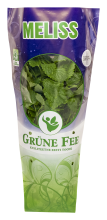
Lemon balm
Lemon balm
XLemon balm has a lemony scent and flavour, and it is used in cooking, herbal medicine, and honey production. The herb is used for making medicinal tea, while fresh and dried leaves are used for cooking. Lemon balm leaves and shoots should be used before flowering, as once the plant starts to flower, it develops a bitter taste.
As a flavouring, lemon balm is used in all kinds of dishes that go well with lemon due to its similar taste and aroma. It can also be used successfully with other herbs, though lemon balm should only be added after boiling. The somewhat hairy leaves, when used in moderation, can be used to wonderful effect in salads. This goes particularly for raw food salads containing apples, pumpkin, zucchini or carrots. Lemon balm is also used in soups, sauces, pea and carrot foods, cold green sauces, boiled fish, and egg dishes, and is one of few herbs used for flavouring compotes, juices, jellies, and sweet vegetable preserves. Fresh lemon balm leaves are used for garnishing desserts and cold dishes. Also used in the canning industry, and widely in the liqueur and vodka industries. Lemon balm is a great substitute for lemon, which makes it perfect for preparing stuffed fish. It can used to make vinegar as well as infused oils.
Lemon balm makes a wonderfully refreshing tea on hot days, and hot lemon balm tea goes well with any meal or dessert as an alternative to coffee.
To prepare a refreshing tea, try combining lemon balm with sweet wine and black tea. Prepare the black tea and lemon balm tea infusion separately, as black tea requires boiling water and 3 minutes of steeping, while lemon balm should be steeped in hot water for 10 minutes. After cooling, mix with wine and keep in the refrigerator or serve with ice. For extra flavour, try adding some tarragon. Lemon balm can also be used to prepare a tasty buttermilk drink by mixing chopped lemon balm leaves with dairy ice cream in a blender.
Lemon balm has a number of medicinal properties known since antiquity, when the plant was prized as an revitalising and uplifting herb. It has been especially revered for its soothing effect. Thanks to a mild lemon aroma, lemon balm acts quickly: a strong dose has a soporific effect, while a weak dose can be used to calm a nervous stomach. Lemon balm is believed to have a rejuvenating effect, and prevents vascular calcification. It can also be used for general pain relief, preventing spasms, easing digestion, as well as relieving gas, colic and menstrual pain. Lemon balm improves memory and helps with migraines. It promotes healthy heart function, helping prevent palpitations and oedema. When suffering from elevated blood pressure, it reduces dizziness and ringing in the ears, while inducing a moderate drop in blood pressure. To shake a cold quickly, drink 4–5 cups of lemon balm tea per day.
To prepare lemon balm tea, it is generally recommended to use 1 tablespoon of the dried herb for 1 cup of hot (not boiling!) water. Then steep for 10 minutes, or longer to treat certain illnesses, and drink while hot.
Lemon balm can also be used in some herb mixes, though it does not go well with all herbs. Good for combining with rosebay willowherb and birch leaves for regulating thyroid activity, not suitable for combining with mugwort in the case of intestinal problems. When treating illnesses, the combined effect requires careful consideration due to the biochemical mix (consult a specialist). In Lithuanian folk medicine, lemon balm is frequently used together with marjoram for enhancing memory.
Storage tips
Lemon balm is best stored between +4 and +8 °C. This means storage is easiest in a cool place, such as a pantry or refrigerator. For longer storage, you should also lightly water the plant once a day. You can keep the pot in a glass of water, but cool conditions are still recommended. Will also keep on the kitchen table or a window sill if watered properly, though not quite as long as when kept cool. Lovely to look at and fills the air with a wonderful aroma when kept on a table.
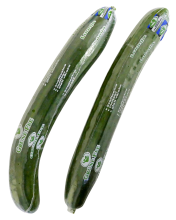
Cucumber
Cucumber
XCucumbers are low in calories and offer many health benefits, making them great for daily consumption. To ensure maximum freshness and nutritional benefits, you should always choose locally produced cucumbers.
Provides a quick boost of energy. Cucumbers are rich in vitamin B, which helps nourish the brain and improve your mood. If you need a quick pick-me-up, grab a fresh cucumber.
Hydrates the body, helps you lose weight and promotes healthy digestion. Cucumbers are low in calories and have a 95% water content. This helps hydrate your body, manage you weight, flush out toxins, and promotes healthy digestion. Avoid peeling your cucumbers, as cucumber peel is a good source of vitamin C.
Helps care for your skin and hair. Cucumber peel can be used instead of aloe for alleviating skin irritation or sunburn. If your eyes are puffy in the morning, placing a slice of cucumber or cucumber peel on your eyelids will help reduce the swelling. Fresh cucumber juice is great for rinsing your hair after washing. It makes your hair stronger and reduces the risk of hair loss.
Helps keep blood pressure under control and reduces cholesterol levels. It has been scientifically proven that compounds known as sterols contained in cucumber help lower cholesterol. Fibre, potassium, and magnesium help keep your blood pressure stable.
Fortifies joints and reduces arthritis pain. Cucumbers are an excellent source of silicon dioxide, which helps alleviate joint problems by strengthening connective tissues. Cucumber juice mixed with carrot juice relieves gout and arthritis pain by helping lower uric acid levels in the body.
Freshen your breath. Hold a slice of cucumber against the roof of your mouth for 30 seconds – the compounds contained in the cucumber kill the odour-producing bacteria in your mouth.
Helps prevent headaches and hangovers. Eating a bit of fresh cucumber after a night of partying provides your body with the sugar, vitamin B and liquids necessary for reducing the risk of developing a headache the morning after.
To relieve heartburn, eat a couple of slices of cucumber with every meal.
Before showering, rub the surface of your bathroom mirror with a slice of cucumber to prevent the mirror from misting up.
Storage tips
Plastic-wrapped Grüne Fee cucumbers are best stored between +12 and +14 °C. Due to the high water content of cucumbers, keeping them in a warm location will slowly cause the water to evaporate and the cucumbers to become shrivelled. While cucumbers are sensitive to cold, it is still better to keep them in the refrigerator than in a warm location.
Note! Avoid storing cucumbers next to bananas or citrus fruits: this will trigger chemical reactions that can cause cucumbers to yellow and spoil rapidly. Sour varieties of apples and tomatoes can also have the same effect. Therefore, you should keep cucumbers separately from these fruits for a significantly longer shelf life.
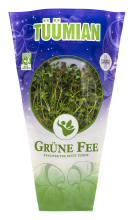
Thyme
Thyme
XThyme is an extremely fragrant plant rich in essential oils. It is mainly added to foods in dried form, but can also be used fresh. Suitable for use in all kinds of soups, pastas, stews, and sauces, as well as vegetable and egg dishes. Excellent for adding flavour to meat marinades and fish. Thyme also has a number of medicinal uses It alleviates headaches, loosens phlegm, and cleans the intestines. Suitable for making tea and infusions.
Storage tips
Thyme is best stored between +4 and +8 °C. This means storage is easiest in a cool place, such as a pantry or refrigerator. For longer storage, you should also lightly water the plant once a day. You can keep the pot in a glass of water, but cool conditions are still recommended. Will also keep on the kitchen table if watered properly, though not quite as long as when kept cool.

Dill
Dill
XUsed fresh, dried as well as frozen. Dill is a versatile herb suitable for a variety of meat, fish and vegetable dishes. Tastes great in soups, broths and sauces. Indispensable for marinating cucumbers and seasoning boiled fresh potatoes.
Storage tips
Fresh dill lasts longest when kept between +4 and +8 °C. This means storage is easiest in a cool place, such as a pantry or refrigerator. For longer storage, you should also lightly water the plant once a day. You can keep the pot in a glass of water, but cool conditions are still recommended. Will also keep on the kitchen table or a window sill if watered properly, though not quite as long as when kept cool.
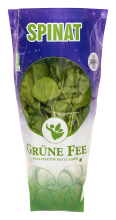
Spinach
Spinach
XSpinach is a superfood that can be used in both hot and cold dishes. It is a versatile plant that can really unleash your culinary imagination. For example, recently spinach has become a popular ingredient in smoothies. Spinach is used in soups, purées, fish, omelettes, pies, fresh salads, and even pancakes.
Spinach is very rich in nutrients. It contains an abundance of antioxidants as well as vitamins A, C, E, K and B9, iron, magnesium, copper, calcium, and dietary fibre.
Storage tips
Fresh spinach lasts longest when kept between +4 and +8 °C. This means storage is easiest in a cool place, such as a pantry or refrigerator. For longer storage, you should also lightly water the plant once a day. You can keep the pot in a glass of water, but cool conditions are still recommended. Will also keep on the kitchen table or a window sill if watered properly, though not quite as long as when kept cool.
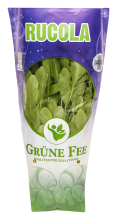
Garden rocket
Garden rocket
XThe slightly bitter and mustard-like flavour of this leafy herb makes it perfect for use in fresh salads, e.g. when combined with mild-flavoured leaf lettuce and feta or mozzarella. Excellent addition to pizzas, omelettes or steaks, as well as for making pesto. Young leaves have a flavour reminiscent of garden cress, mustard, and nuts. Also used medicinally as a source of vitamin C and promoter of healthy digestion.
Storage tips
It is best stored between +4 and +8 °C. This means rocket is easiest to store in a cool temperature-controlled space, such as a pantry or a refrigerator. For longer storage, you should also lightly water the plant once a day. You can keep the pot in a glass of water, but cool conditions are still recommended. Warmth leads to faster decay.
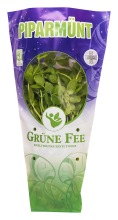
Peppermint
Peppermint
XThe peppermint plant is commonly used for making aromatic peppermint tea. Fresh peppermint leaves are also used for flavouring and garnishing a range of desserts. Can be used equally well for seasoning meat dishes. Peppermint tincture has pain-relieving properties, reduces nausea and intestinal gas. Peppermint tincture can easily be prepared at home: just gather some peppermint flowers and leaves and soak them in vodka.
Storage tips
Peppermint is slightly easier to preserve than most other herbs, as long as you protect it from the cold and water it well. While not as delicate as basil, peppermint leaves will turn dark in cool conditions. To keep it fresh longer, ensure an even temperature: temperature fluctuations reduce the shelf life of the plant. The most convenient way to store peppermint is to place it on the kitchen table in a decorative pot. This way, it is lovely to look at and will freshen the air with its wonderful aroma. Provided the plant is kept sufficiently moist, it will keep this way for a relatively long time.
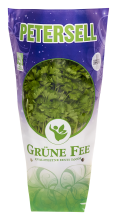
Parsley
Parsley
XParsley is a popular herb with a high vitamin C content. Suitable both fresh and dried. Add to soups, meat, fish, vegetable dishes, sauces or salads. Perfect for garnishing a variety of dishes. Parsley promotes healthy digestion.
Storage tips
It is best stored between +4 and +8 °C, for example, in a pantry or refrigerator. For longer storage, you should also lightly water the plant once a day. You can keep the pot in a glass of water, but cool conditions are still recommended. Warmth leads to faster decay.
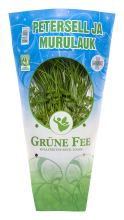
Parsley and chives
Parsley and chives
XA great mix of two highly valued herbs. Add this herb mix to salads or soups or use for garnishing a range of dishes.
Chives are commonly used for adding flavour to salads and soups. Also suitable on sandwiches. Milder than scallions. For a simple and tasty side salad, combine fresh chives with tomatoes, cucumber, and sour cream. Chives are best when fresh, but also great when dried.
Parsley is a popular herb with a high vitamin C content. Suitable both fresh and dried. Add to soups, meat, fish, vegetable dishes, sauces or salads. Perfect for garnishing a variety of dishes. Parsley promotes healthy digestion.
Storage tips
It is best stored between +4 and +8 °C. This makes potted plants easiest to store in a cool temperature-controlled space, such as a pantry or a refrigerator. For longer storage, lightly water the plant once a day. You can keep the pot in a glass of water, but cool conditions are still recommended. Warmth leads to faster decay.
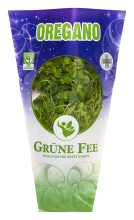
Oregano
Oregano
XOregano gives foods a pleasant aroma and spicy flavour. Fresh leaves are used for cooking, but many dishes can also be flavoured using dried oregano. Oregano goes best with meat, but also tastes great on pizzas and in soups. Oregano is an essential ingredient in any proper blood sausage and is known as ‘sausage grass’ by Estonians when used for this purpose. Oregano has many medicinal properties and is used in both folk medicine and the pharmaceutical industry. When used medicinally, oregano has a soothing effect, stimulates secretions, promotes healthy digestion, offers anti-inflammatory benefits, relieves spasms, gallbladder inflammation and liver ailments, as well as rheumatic pains and joint inflammation. It is also suitable for making tea.
Storage tips
I’m green, me, and not a fan of the cold, you see. Below 10 degrees, my leaves are wont to freeze. So keep me far from the fridge and clear of the winter breeze. And try not to pack me too tightly between the shopping, please.

Chives
Chives
XChives are commonly used for adding flavour to salads and soups. Also suitable on sandwiches. Milder than scallions. For a simple and tasty side salad, combine fresh chives with tomatoes, cucumber, and sour cream. Chives are best when fresh, but also great when dried.
Storage tips
Fresh chives last longest when kept between +4 and +8 °C. This means storage is easiest in a cool place, such as a pantry or refrigerator. For longer storage, you should also lightly water the plant once a day. You can keep the pot in a glass of water, but cool conditions are still recommended. Will also keep well on the kitchen table or a window sill if watered properly, though not quite as long as when kept cool.
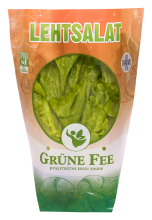
Leaf lettuce
Leaf lettuce
XMild, juicy, and soft to the bite. Best used as the main ingredient in a fresh salad. Flavour with various dressings, e.g. balsamic vinegar. Top tip: adding a dash of oil helps the body absorb the fat-soluble vitamins found in the lettuce. Leaf lettuce is perfect on top of a sandwich, in a smoothie, or for garnishing a range of dishes. Leaf lettuce, similarly to cucumber, is rich in water, with a solid content of only 5–7%, which is distributed more or less equally between carbohydrates, proteins, fibre, and minerals. The low calorie content makes leaf lettuce ideal for anyone looking for a healthy meal that helps you maintain a desirable weight: leafy greens are very filling and great for staving off hunger without piling on the pounds. But the list of benefits does not end there. Leaf lettuce is rich in minerals, including potassium, calcium, magnesium, phosphorus, and even iron. It also offers an abundance of group B vitamins, fat-soluble vitamins, and carotenoids, which the body converts into vitamin A.
Storage tips
Potted leaf lettuce lasts longest when kept between +4 and +8 °C. This means storage is easiest in a cool place, such as a pantry or refrigerator. For longer storage, you should also lightly water the plant once a day. You can keep the pot in a glass of water, but cool conditions are still recommended. Will also keep well on the kitchen table or a window sill if watered properly, though not quite as long as when kept cool.
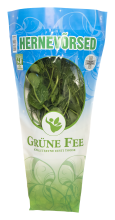
Pea shoots
Pea shoots
XA trendy leafy vegetable. Fresh pea shoots can be eaten on their own, added to salads, used for garnishing sandwiches and other foods, or mixed into hot dishes, such as stir-fries. Also great for serving on the side with potatoes, risottos or soups. Cooked pea shoots are a delicious addition to fish, chicken or pastas, while chopped shoots can be added to marinades and a range of sauces. Young shoots are the tastiest and mildest.
Storage tips
Pea shoots are best stored between +4 and +8 °C. This means they are easiest to store in a cool space, such as a pantry or refrigerator. For longer storage, you should also lightly water the plant once a day. You can keep the pot in a glass of water, but cool conditions are still recommended. Will also keep on the kitchen table or a window sill if watered properly, though not quite as long as when kept cool. As pea shoots are a delicious snack even on their own, don’t leave them out for too long or you might come back to an empty bowl.
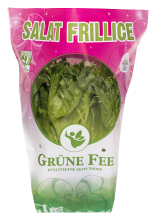
Frillice lettuce
Frillice lettuce
XFrillice is a variety of iceberg lettuce with thicker and more closely packed leaves and broader stems than regular leaf lettuce. Its colour is a deeper shade of green and it is also a fair bit crunchier. Thanks to its stronger leaves, frillice stays fluffier in mixed salads and is not as quick to collapse. It is also great for making hot sandwiches. Highly decorative when used for garnishing snack platters or as the base layer of a snack tray.
Storage tips
Potted frillice is best stored between +4 and +8 °C. Keep it in a cool place, such as a pantry or refrigerator. For longer storage, you should also lightly water the plant once a day. You can keep the pot in a glass of water, but cool conditions are still recommended. Will also keep on the kitchen table or a window sill if watered properly, though not quite as long as when kept cool.
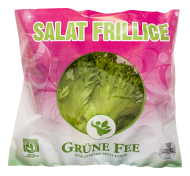
Cut frillice
Cut frillice
XFrillice is a variety of iceberg lettuce with thicker and more closely packed leaves and broader stems than regular leaf lettuce. Its colour is a deeper shade of green and it is also a fair bit crunchier. Thanks to its stronger leaves, frillice stays fluffier in mixed salads and is not as quick to collapse. It is also great for making hot sandwiches. Highly decorative when used for garnishing snack platters or as the base layer of a snack tray.
Storage tips
Cut frillice is best stored between +4 and +8 °C. Keep in the refrigerator. Cut frillice is best used immediately, as even when kept in the refrigerator, it will wilt within a few days.
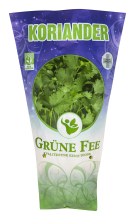
Coriander
Coriander
XCoriander or cilantro is widely used in Arab cuisine. Fresh chopped coriander leaves can be added to soups, sauces, poultry or lamb dishes, and, of course, fresh salads. Fresh coriander is used similarly to parsley, but take care not to use too much, as coriander has a significantly stronger flavour.
Storage tips
Potted coriander lasts longest when kept between +4 and +8 °C. This means storage is easiest in a cool place, such as a pantry or refrigerator. For longer storage, you should also lightly water the plant once a day. You can keep the pot in a glass of water, but cool conditions are still recommended. Will also keep on the kitchen table or a window sill if watered properly, though not quite as long as when kept cool.
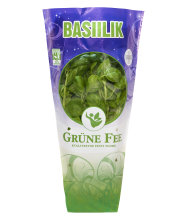
Basil
Basil
XBasil is best used for making pesto sauce. It goes perfectly with cheese, tomatoes, and garlic, for example in wonderfully delicious tomato and basil bruschetta. Basil is a versatile herb that can be used both fresh and dried in meat, fish, cheese or pastas. It is equally great in oven-baked dishes, pasta sauces, and a variety of salads. Also used for making flavoured oils. Note! When making hot meals, add fresh basil at the end, after cooking or boiling.
Thanks to its valuable medicinal properties, Basil has long been regarded as a sacred plant in Asia and has also been used in temples in Europe. It contains a potent antiseptic essential oil that alleviates muscle cramps, supports heart function, and helps treat digestive disorders, including inflammatory bowel disease. Basil also relieves anxiety, insomnia, migraines, and chronic rhinitis! According to folk wisdom, basil even reduces discomfort caused by malignant tumours. In the Middle Ages, the sacred plant was widely known as a remedy against scorpion stings and the bites of venomous insects.
Storage tips
Basil should be stored in a relatively warm place. Ideal temperature is around 14 °C. For a longer shelf life, remember to water the plant. Avoid keeping basil in the refrigerator: temperatures below 10 °C will damage the leaves and cause them to turn black relatively quickly. You should also avoid crushing or squeezing the plant, e.g., when packed between other items in a shopping bag. This will cause the leaves to go brown and any snapped edges to quickly turn black. In the winter, place your store-bought basil plant in a separate bag or wrap it in paper to prevent cold damage during transport. And remember to take it out of the car once you get home, as sub-zero degrees will cause the plant to die. The most convenient way to store basil is to place it on the kitchen table in a decorative pot. This way, it is lovely to look at and will freshen the air with its wonderful aroma. Provided the plant is kept sufficiently moist, it will keep this way for a relatively long time.

Green and red basil
Green and red basil
XThis mix of green and red basil is perfect for vegetable lovers who consider appearances at least as important as taste – the differently coloured leaves create attractive contrast when used for garnishing or in salads.
Basil is best used for making pesto sauce. It goes perfectly with cheese, tomatoes, and garlic, for example in wonderfully delicious tomato and basil bruschetta. Basil is a versatile herb that can be used both fresh and dried in meat, fish, cheese or pastas. It is equally great in oven-baked dishes, pasta sauces, and a variety of salads. Also used for making flavoured oils. Note! When making hot meals, add fresh basil at the end, after cooking or boiling.
Thanks to its valuable medicinal properties, Basil has long been regarded as a sacred plant in Asia and has also been used in temples in Europe. It contains a potent antiseptic essential oil that alleviates muscle cramps, supports heart function, and helps treat digestive disorders, including inflammatory bowel disease. Basil also relieves anxiety, insomnia, migraines, and chronic rhinitis! According to folk wisdom, basil even reduces discomfort caused by malignant tumours. In the Middle Ages, the sacred plant was widely known as a remedy against scorpion stings and the bites of venomous insects.
Storage tips
Basil should be stored in a relatively warm place. Ideal temperature is around 14 °C. For a longer shelf life, remember to water the plant. Avoid keeping basil in the refrigerator: temperatures below 10 °C will damage the leaves and cause them to turn black relatively quickly. You should also avoid crushing or squeezing the plant, e.g., when packed between other items in a shopping bag. This will cause the leaves to go brown and any snapped edges to quickly turn black. In the winter, place your store-bought basil plant in a separate bag or wrap it in paper to prevent cold damage during transport. And remember to take it out of the car once you get home, as sub-zero degrees will cause the plant to die. The most convenient way to store basil is to place it on the kitchen table in a decorative pot. This way, it is lovely to look at and will freshen the air with its wonderful aroma. Provided the plant is kept sufficiently moist, it will keep this way for a relatively long time.
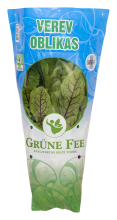
Red-veined sorrel
Red-veined sorrel
XThe red-veined sorrel, identifiable by its attractive leaves which are criss-crossed by reddish veins, is significantly milder than the common sorrel. Mostly used in fresh salads, but also suitable for stir-fries, pies and a variety of egg dishes.
Storage tips
It is best stored between +4 and +8 °C. This means storage is easiest in a cool temperature-controlled space, such as a pantry or a refrigerator. For longer storage, you should also lightly water the plant once a day. You can keep the pot in a glass of water, but cool conditions are still recommended. Warmth leads to faster decay.
